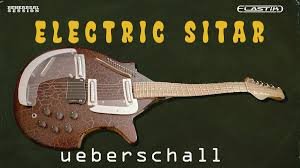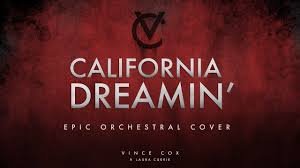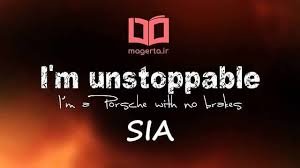
electric sitar
Introduction to the Electric Sitar
The Electric Sitar is a remarkable musical innovation that blends the ancient soul of Indian classical music with the modern power of amplified sound. A unique fusion instrument, the electric sitar is often designed to look and feel like a guitar, while capturing the iconic buzzing resonance of a traditional Indian sitar. Invented in the mid-20th century, it quickly became a staple in genres like psychedelic rock, fusion jazz, ambient music, and world fusion. Today, it is used by both classical musicians and experimental artists who are drawn to its exotic tone, versatile playability, and stage-ready capabilities.
The Origins and Invention of the Electric Sitar
The electric sitar was first developed in the 1960s by Vincent Bell, a session guitarist who wanted to capture the mystical tone of the Indian sitar without the complexity of learning the traditional instrument. Working with Danelectro, he designed a sitar-like guitar that had a flat fretted neck, guitar tuning, and a special buzzing bridge known as the “buzz bridge” or “drone bridge”. This allowed Western guitarists to imitate the sitar sound using familiar guitar techniques. The result was an entirely new instrument that allowed for the distinctive Indian twang while offering the ease of play and amplification of an electric guitar.
Design and Structure of the Electric Sitar
Although it looks more like a guitar, the electric sitar incorporates several features of the traditional Indian sitar to emulate its characteristic sound. Key components include:
- Sympathetic strings: Usually 11 to 13 strings that resonate along with the played notes, creating the sitar’s signature drone and shimmer.
- Buzzing bridge (Jawari-style bridge): Mimics the buzzing sound caused by string vibration against a flat bridge surface.
- Standard guitar frets: Unlike the curved frets of a classical sitar, electric sitars usually have straight frets, which make them easier to play for guitarists.
- Pickup system: High-quality magnetic pickups or piezo systems for clean and consistent amplified output.
Some modern models even include MIDI compatibility, built-in effects, and custom EQ settings, making the electric sitar a versatile instrument for recording and performance alike.
Sound Characteristics and Tonal Qualities
The most fascinating part of the electric sitar’s sound is its ability to produce a bright, buzzing, drone-like resonance that’s instantly recognizable. It captures the essence of Indian classical music, especially the ragas and drones, while allowing for modern articulation and effects. The sympathetic strings vibrate in harmony with the played notes, adding a textured shimmer to the tone. When combined with reverb, delay, or distortion, the electric sitar can range from meditative ambience to gritty psychedelia. Whether in a studio setting or live on stage, its unique timbre easily stands out in a mix.
Famous Songs and Artists Using Electric Sitar
The electric sitar gained widespread recognition in the 1960s and 70s, especially with the rise of psychedelic rock and the influence of Indian music on Western artists. Notable examples include:
- “Paint It Black” by The Rolling Stones: Though it used a traditional sitar, it inspired electric sitar use in rock.
- “Hooked on a Feeling” by B.J. Thomas: One of the first hits to use an electric sitar.
- “Cry Like a Baby” by The Box Tops: Features a prominent electric sitar riff.
- [Steely Dan, George Harrison, and The Beatles] incorporated sitar sounds into their later work.
Modern experimental and ambient artists like Anoushka Shankar, Jonny Greenwood, and Karsh Kale have also used electric sitars to blend Indian tones with contemporary genres.
Electric Sitar vs. Traditional Sitar
Though they share a name and tonal resemblance, the electric sitar and the classical sitar are very different instruments in construction, technique, and cultural background.
- The traditional sitar requires years of dedicated learning, specific finger positions, and specialized tuning to master the art of ragas.
- The electric sitar, on the other hand, is tuned and played like a guitar, allowing guitarists to quickly adapt and include the sitar sound in their playing.
- The traditional sitar is acoustic and relies on natural resonance, whereas the electric sitar depends on pickups and amplification.
While purists may argue that the electric sitar lacks the depth of the original, its accessibility and versatility have made it a popular choice among modern musicians.
Modern Models and Where to Buy
Several brands and luthiers manufacture electric sitars, ranging from entry-level to professional-grade models. Popular choices include:
- Danelectro Coral Electric Sitar: The original and most iconic model, still available in reissues.
- Jerry Jones Electric Sitar: Known for premium build and vintage accuracy (now discontinued but available second-hand).
- Eastwood Sitar Guitar: A modern take with improved build quality and tuning stability.
- Custom Luthier-Made Sitars: Handmade options tailored to your tuning and performance needs.
Buyers can find these on websites like Reverb, Sweetwater, and Thomann. When purchasing, it’s important to consider pickup quality, sympathetic string tuning, string action, and bridge design.
Electric Sitar in Different Music Genres
The electric sitar has carved out a place in many different genres beyond just rock and Indian fusion.
- Jazz fusion: Artists incorporate sitar tones to explore modal scales and Eastern harmonies.
- Ambient and electronic music: Used with loopers, delay, and granular effects for meditative textures.
- Hip hop and lo-fi: Some producers sample sitar sounds or play electric sitar live for atmospheric vibes.
- Metal and progressive rock: Bands use sitar layers for intros or interludes to add mystique.
This versatility makes it a powerful tool for musicians who want to break the boundaries of traditional composition.
Accessories and Enhancements
To get the most out of your electric sitar, consider investing in the following accessories:
- Compressor pedals: Enhance sustain and balance dynamics.
- Reverb/delay units: Add space and depth to your tone.
- EQ pedals: Shape the buzzing tone for better mixing.
- Tuning tools: Especially useful for sympathetic strings.
- Sitar-specific bridges and nuts: These can significantly affect buzz quality and playability.
Additionally, patch cables, strap locks, and string cleaners help maintain the instrument’s health and performance over time.
Learning Resources and Tutorials
Because the electric sitar shares much of its structure with the guitar, learning to play it is relatively straightforward for guitarists. However, to master its expressive capabilities, it’s useful to study:
- Indian classical music basics: Ragas, talas, ornamentation.
- YouTube channels like Electric Sitar Techniques, Danelectro Demos, and World Music Guitar.
- Online courses on platforms like Udemy, Skillshare, and ArtistWorks.
- Books such as The Sitar Book or Ragas for Guitar and Sitar.
With consistent practice, players can learn how to incorporate sitar bends, slides, and drone harmonics into their compositions.
Why Choose the Electric Sitar?
The electric sitar is a compelling choice for musicians looking to add an exotic flavor and unique sonic texture to their music without the steep learning curve of the traditional sitar. It allows artists to tap into the spiritual depth of Indian music, while still operating within the technical framework of Western instruments. Its ability to blend across genres, respond to effects, and stand out in both studio and live environments makes it one of the most underrated fusion instruments of our time.
Conclusion: Tradition Amplified
The electric sitar stands as a beautiful example of how tradition and technology can work hand in hand. It pays homage to the ancient sitar while embracing modern musical demands. Whether you’re a guitarist looking to experiment with Eastern tones or a producer wanting to add something ethereal to your sound palette, the electric sitar offers a gateway to new sonic landscapes. In a world where music continues to evolve, this hybrid instrument proves that the past and future of sound can truly exist in harmony.






